Is Green Mountain Coffee "copycat Blue Mountain"? what grade is it? Taste difference between Blue Mountain Coffee and Green Mountain Coffee
Blue Mountain Coffee has been famous all over the world since the last century. Today, a brand called Green Mountain Coffee is exposed to the public. Many friends asked Qianjie, "is Green Mountain Coffee hot against Blue Mountain Coffee?" and "is Green Mountain Coffee fake Blue Mountain Coffee?" Or something like that. So Qianjie decided to give you the question of Green Mountain Coffee and Blue Mountain Coffee.
Green Mountain Coffee is not a coffee bean!
Green Mountain Coffee is not a coffee bean, but a coffee brand. Green Mountain Coffee 1981 was founded in the United States and headquartered in Vermont. It was listed on Nasdaq in 1993 and was acquired by a German consortium in December last year for $13.9 billion. Green Mountain Coffee (GreenMountainCoffeeRoasters) is valued from $100m to $15 billion, not on annual sales of 12, 000 tons of coffee, but on 16 million transformed coffee machines.
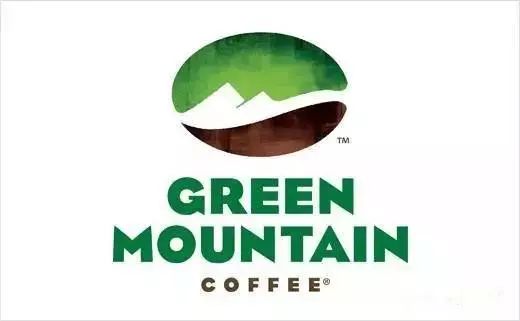
Green Mountain Coffee was founded mainly to roast coffee beans, the founder set a three-step strategy, the first step is from the low-end consumer market to the high-end consumer market, selling high-quality Arabica coffee beans. The second step is to set up an environmental steering committee to make use of environmental protection and social responsibility to improve the brand awareness and reputation of coffee. The third step is to improve the specialization of production in order to improve the quality and stability of coffee roasting.
It is not enough because the raw materials of coffee beans continue to rise, which poses a challenge to the business model of green coffee. Therefore, Green Mountain Coffee opens up a new blue ocean, which is the production of KEURIG coffee machine and matching K-cup coffee. The so-called "K cup" is a patented product of Green Mountain, a container that looks like a paper cup with a smaller paper cup-shaped infiltration device that can only penetrate liquid and sealed with an aluminum foil cover to ensure that the aroma of coffee will not be emitted.
Put the K cup into the Krieger coffee machine, press the button, and the pressurized injection pipe will break through the aluminum foil cover into the filter cup and fill with hot water. Coffee can accurately control the amount of water, water temperature and pressure to maximize the aroma of coffee.
No need to grind coffee beans, no weighing, no cleaning, no residue at the bottom of the cup, you can make a cup of coffee in a minute. KEURIG can be called a "fool" product in the coffee industry.
Green Mountain Coffee does not rely on machines to make money. The KEURIG coffee machine costs only more than $100. K-cup is the real cash cow. A 24-cup K-cup usually sells for $12, equivalent to $0.50 per cup. Although the price is not high, large quantity is the key. At present, the total installed capacity of Green Mountain Coffee in American households and enterprises has reached 16 million, and according to the consumption of 1 cup per day, the total consumption of K cups per year is about 6 billion cups.
Green Mountain has applied for a number of K-cup related patents, and with these patents, Green Mountain's K-Cup is open to all beverage merchants. Green Mountain allows other coffee, tea or hot cocoa manufacturers to use K-cup packaging on Green Mountain's KEURIG coffee machine, for which these companies pay a license fee of 6 cents per cup.
So there is little relationship between Green Mountain Coffee and Blue Mountain Coffee except for their very similar names. Blue Mountain Coffee beans are famous and famous.
The rise of Blue Mountain Coffee
Blue Mountain is a mountain range located in the east of the island of Jamaica. At first, it was during the British colonial period, when the then Governor Nicholas Lawes got a coffee tree from the Governor of Martinique, so Jamaica began to grow coffee. However, in the remaining 200 years, Jamaicans did not pay much attention to the cultivation of coffee, and Jamaican coffee was lukewarm.
Until 1932, the Jamaican government decided to encourage coffee cultivation to reduce dependence on sugar cane, another cash crop. Jamaica's emphasis on coffee is to improve quality, not to increase production, but it is reasonable, because the Blue Mountains are so small that even doubling production is not as good as a fraction of the coffee-producing countries. The only way out for Jamaica is to develop high-quality coffee.
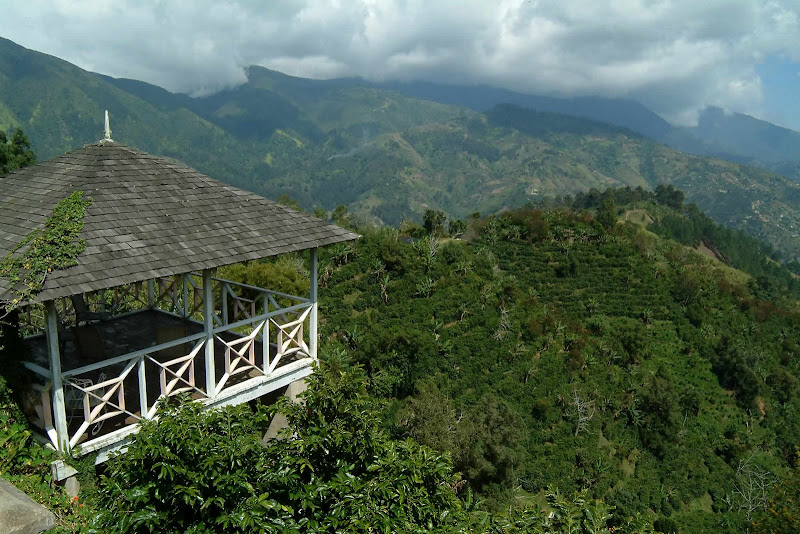
In 1953, the Jamaican Coffee Industry Committee, which specializes in coffee matters, formulated the standard of Blue Mountain Coffee for the first time, which laid the foundation for the high quality of Blue Mountain Coffee in the future.
First of all, the committee defines what is the real Blue Mountain Coffee. The beans grown in the Blue Mountains are not called Blue Mountain Coffee. Only Arabica Tika Coffee from St.Andrew, St.Mary, St.Thomas and Portland can be called Jamaican Blue Mountain Coffee (Jamaica Blue Mountain). The total area of the four producing areas is only 6000 hectares. Coffee grown at an altitude of 460m to 910m is called "Jamaican Alpine Coffee" (Jamaica High Mountain), while less than 460m is "Jamaican Coffee of Choice" (Jamaica Supreme), which is of lower quality and lower price than Blue Mountain Coffee.

There are also grades in Blue Mountain Coffee, which are divided from high to low:
Blue Mountain No.1 (Blue Mountain No.1), also known as Blue Mountain No.1, is the top Blue Mountain Coffee. It is screened by Smuri 17amp 18 screen, and the defective beans are less than 2%.
Blue Mountain No.2 (Blue Mountain No.2), screened by Smur16ram 17 screen, the bean size is slightly smaller than Lanshan 1, and the defective bean is less than 2%.
Blue Mountain No.3 (Blue Mountain No.3), screened by Smur15ram 16 screen, beans are smaller than No.2 and defective beans are less than 2%.
Blue mountain round beans (Blue Mountain Peaberry, or Blue Mountain P.B), more than 96% of round beans, less than 2% of defective beans, this is actually a special selection of beans, many people think that this grade of beans is actually above No.1, and some people think that it is between No.1 and No.2.
Blue Mountain selection (Blue Mountain Triage, also translated as Blue Mountain mixture), a mixture of the above four, defective beans are less than 4%, which are actually unscreened beans.
Purchase and Identification of Blue Mountain Coffee
Qianjie saw a lot of remarks such as "Blue Mountains have been bought by the Japanese" and "there are no real blue mountains in China" on the Internet. Qianjie just wants to say, "my Lord, times have changed". If this sentence had been put 10 years ago, it would have been true, but today in 2022, earth-shaking changes have already taken place.
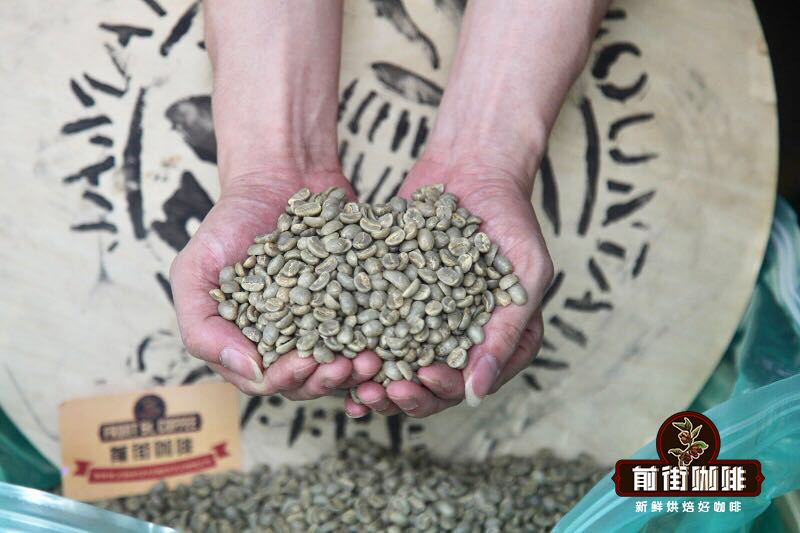
Let's first talk about why Blue Mountain Coffee was bought by the Japanese. In 1969, Jamaica was hit by a severe hurricane and plantations suffered heavy losses. Japan's UCC company provided a lot of assistance to revive the Jamaican coffee industry. In return, Jamaica signed an agreement with Japan in 1972 to allocate 90% of the Blue Mountain Coffee quota to Japan, Europe and the United States 5% each. So the saying that the Japanese bought most of the Blue Mountain coffee has spread to this day. However, Japan monopolizes the Blue Mountain coffee market, not all of which are sold in Japan's domestic market, some of which are sold to other places, such as South Korea, Hong Kong and Taiwan, at a premium. At that time, Chinese mainland also had some private channels to introduce real Blue Mountain coffee through Hong Kong and Taiwan, but such Blue Mountains were sky-high prices and ordinary people could not afford to consume them.
Until 2010, Chinese mainland had no quota to buy Blue Mountain coffee directly from Jamaica. After the economic crisis of 2008, Jamaica tried to move away from its dependence on a single coffee buyer, just as the agreement with Japan expired and the quota for Blue Mountain coffee beans gradually opened up to more countries. According to media reports, in July 2010, Hangzhou Coffee Western Food Industry Association was invited to visit Jamaica and signed a letter of intent of the sole distributor of Lanshan Coffee Raw beans in China. In May 2011, the first cabinet of Blue Mountain Coffee beans arrived at Ningbo Port, which should be the first time that Blue Mountain Coffee beans have officially entered the Chinese mainland market. Since then, Chinese mainland has had a direct flight from Jamaica to Blue Mountain Coffee every year, so it is old news that there are no real blue mountains in China.
Blue Mountain Coffee is packaged and exported in the form of wooden buckets, which is also the most characteristic way in the world. At present, there are two specifications of 70kg vats and 15kg buckets. Qianjie buys blue mountain coffee beans from the original bucket of Clifton farm every year.
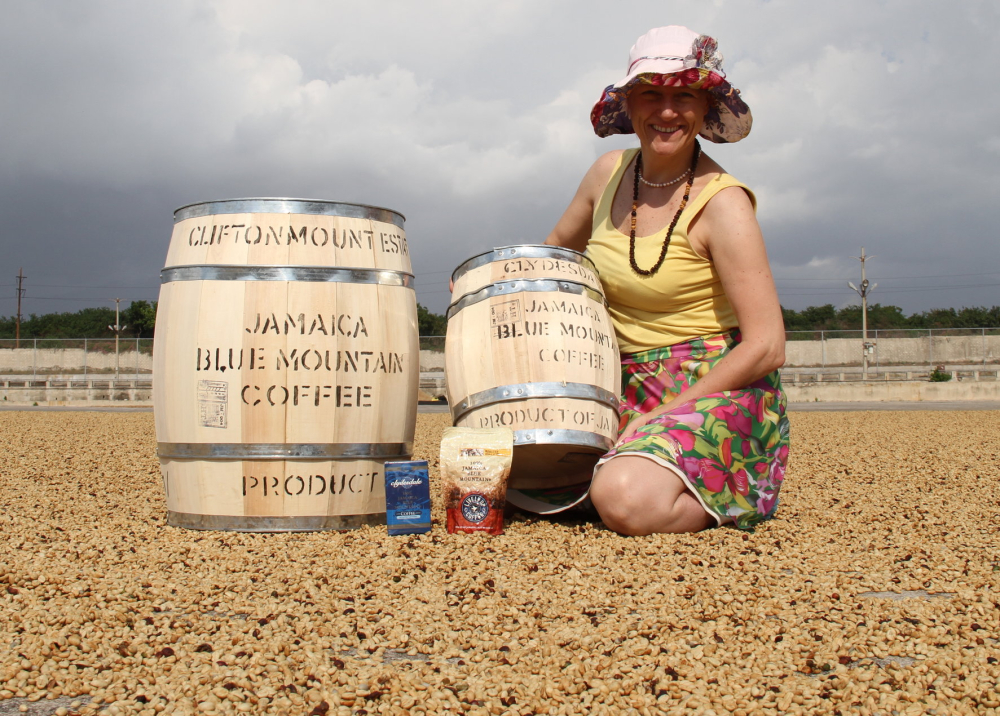
Clifton Farm is a farm with a long history of growing Blue Mountain Coffee in Jamaica, and it is also the only farm in the Blue Mountain area that has been certified by tropical rain forest. The original barrel of blue mountain coffee beans imported from the official source will have a certificate from Clifton farm to prove that they are blue mountain coffee beans from Clifton farm. When you buy blue mountain coffee beans, you can pay attention to whether they are packed in log casks and whether they are certified or not.
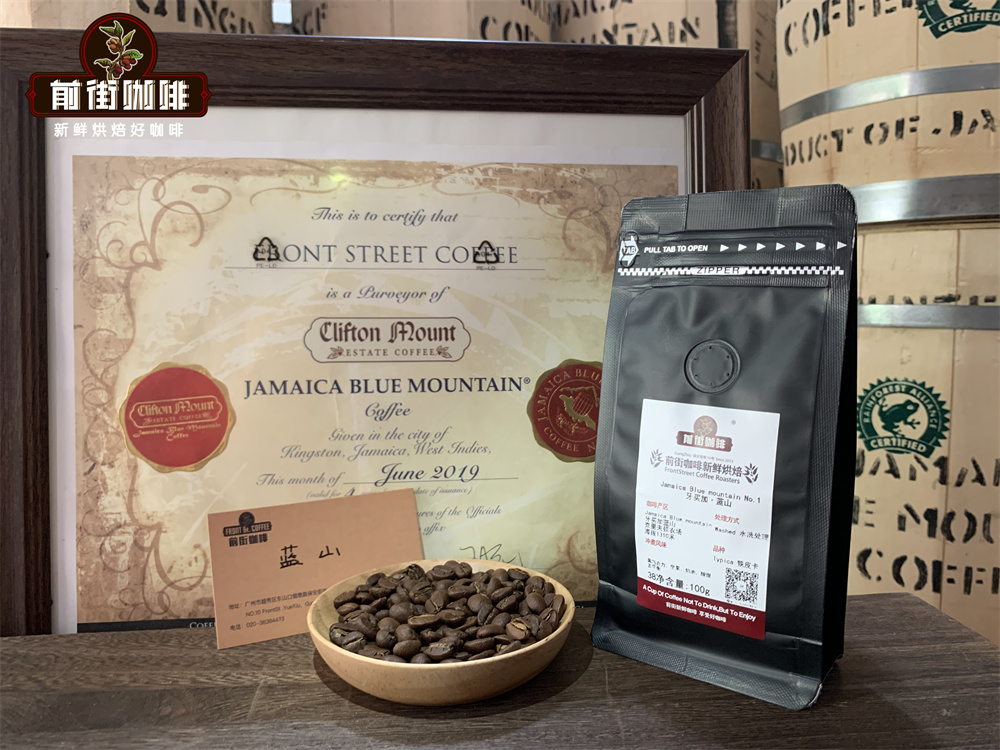
Blue Mountain Coffee Bean is a kind of tin card, this variety is an excellent variety of Arabica, thanks to Jamaica is a closed island, making the iron pickup coffee varieties genetically pure. The traditional blue mountain coffee beans are treated with water, which was the latest treatment technology at that time 200 years ago. compared with the sun treatment, the water washing treatment has higher quality, better bean appearance and clean taste.
Qianjie uses medium and deep roasting when baking blue mountain coffee beans, highlighting the characteristics of blue mountain sweet, sour and bitter balance and mellow.
Specific baking record: 500g raw beans, roaster for Yang family 600n semi-direct fire.
The furnace temperature is 165℃, the firepower is 130mm, the throttle is set up 3; the temperature recovery point is 1pm / 39th / 32 ", when the furnace temperature is 95.8℃, the firepower is unchanged; the blower door is adjusted to 4pm in 3 minutes, and the firepower is increased to 140min. When the furnace temperature is 153.3 ℃, the bean table turns yellow, and the smell of grass disappears completely, and enters the dehydration stage. When 8 minutes after the explosion, the smell of toast obviously changes to the smell of coffee, which can be defined as a prelude to an explosion. At this time, you should listen clearly to the sound of an explosion point, start to explode until 10 minutes after the explosion, develop 3 minutes after an explosion, and drop beans for 198.5 ℃.
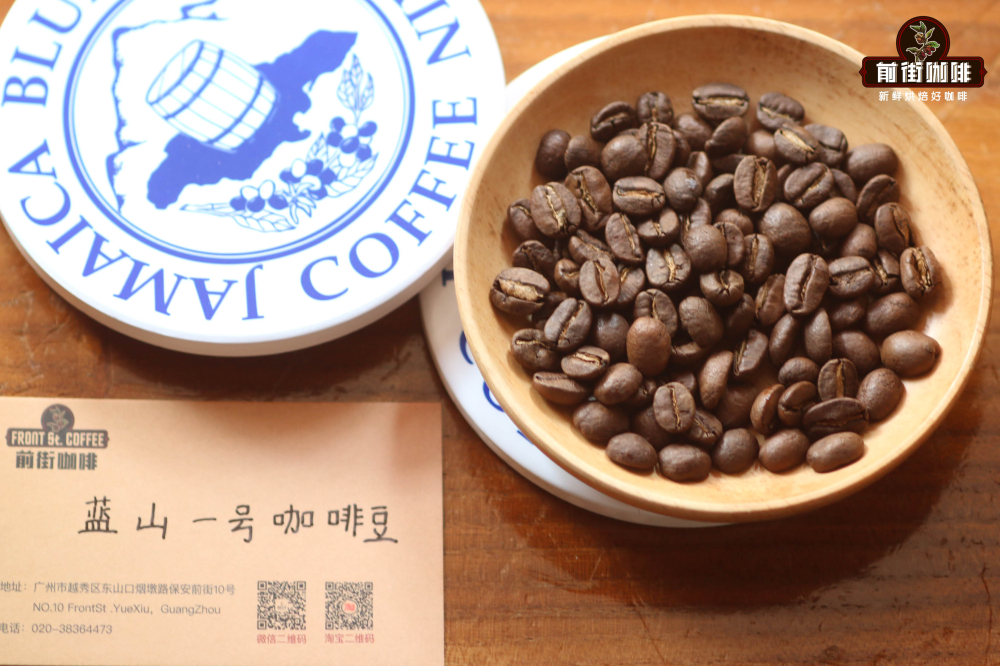
Suggestion on brewing Jamaican Blue Mountain No. 1 coffee beans in Qianjie coffee
Qianjie recommends using freshly roasted coffee beans for brewing, so that you can maximize the rich flavor of the coffee. The coffee beans shipped in Qianjie are all roasted within 5 days, because Qianjie is well aware that the freshness of coffee beans has a great impact on the flavor. The purpose of Qianjie roasting is "freshly roasted coffee", so that every guest who places an order is the freshest coffee when he receives it. The bean cultivation period of coffee is about 4-7 days, so when the guest gets it, it is the time when the flavor is the best.
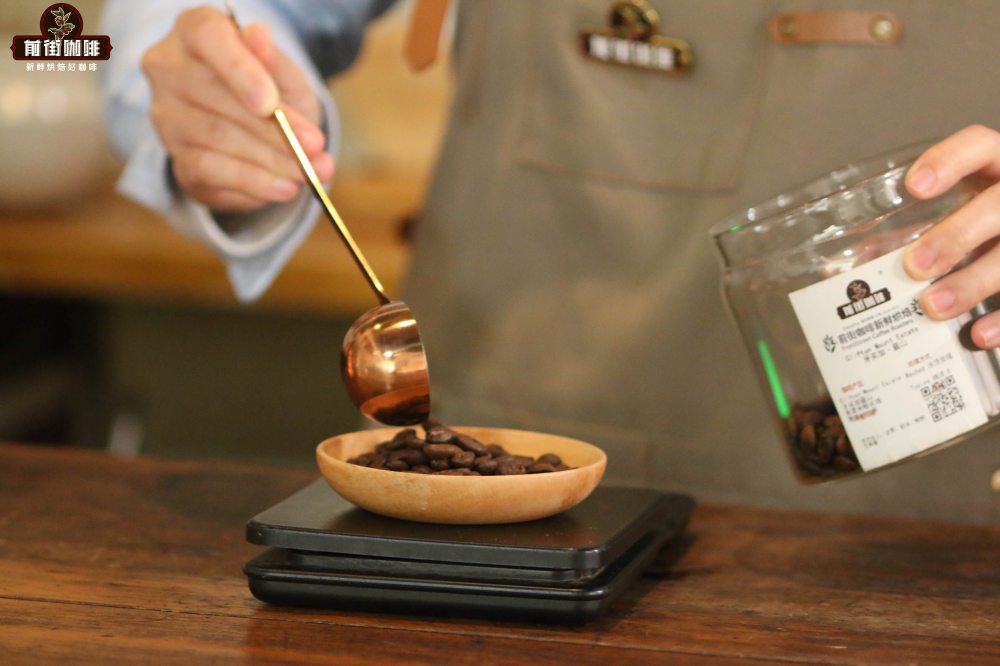
Powder quantity 15g, water temperature 87 ℃, ratio of water to powder 1:15, moderate grinding (pass rate of Chinese standard No. 20 sieve 75%)
Filter cup uses KONO filter cup.
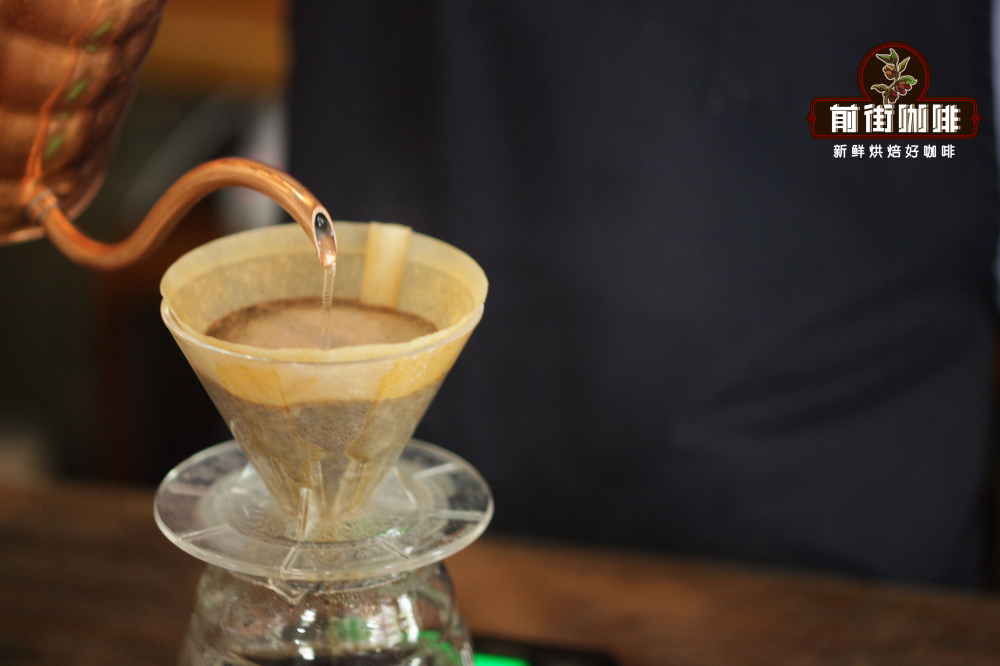
First, the 30ml was injected into the water for 30 seconds, then the second small flow was injected around the circle until the 125ml was cut off, and when the liquid level dropped to the point where the powder layer was about to be exposed, the third stage of water injection was continued, and the total extraction time (including stifling steaming) was 2 percent 39 percent after water injection to the end of 225ml extraction.
Important Notice :
前街咖啡 FrontStreet Coffee has moved to new addredd:
FrontStreet Coffee Address: 315,Donghua East Road,GuangZhou
Tel:020 38364473
- Prev
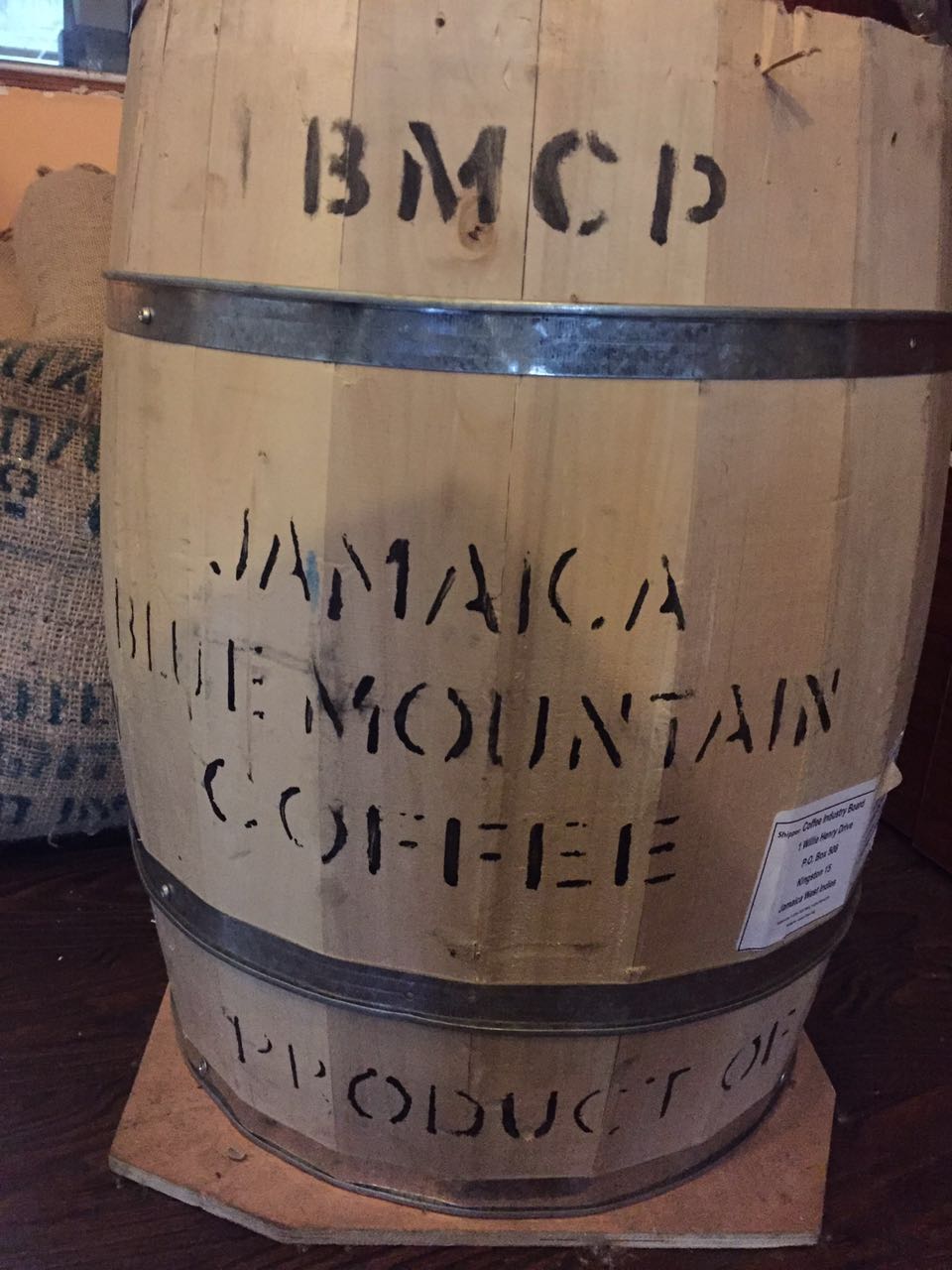
Blue Mountain Coffee How to distinguish true and false Blue Mountain Coffee Bean taste characteristics evaluation and flavor introduction
Blue Mountain Coffee Weight Loss? About the effect of coffee weight loss, many people say
- Next
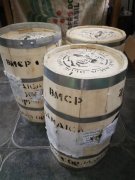
Jamaica Blue Mountain Coffee and Hawaiian Kona have long been known as the king and queen of coffee
The purchase and identification of Blue Mountain Coffee in the early years of the country did not know that the jaw was almost dislocated (estimated to be mainly aware of the price of Blue Mountain Coffee in the Chinese market...) So began to attach importance to the Chinese market, now in the country to buy Blue Mountain coffee is not what is difficult, Hangzhou Dan Shirui exclusive agent. The channel is not limited to this one, private channels, or raw materials imported through a third country.
Related
- Detailed explanation of Jadeite planting Land in Panamanian Jadeite Manor introduction to the grading system of Jadeite competitive bidding, Red bid, Green bid and Rose Summer
- Story of Coffee planting in Brenka region of Costa Rica Stonehenge Manor anaerobic heavy honey treatment of flavor mouth
- What's on the barrel of Blue Mountain Coffee beans?
- Can American coffee also pull flowers? How to use hot American style to pull out a good-looking pattern?
- Can you make a cold extract with coffee beans? What is the right proportion for cold-extracted coffee formula?
- Indonesian PWN Gold Mandrine Coffee Origin Features Flavor How to Chong? Mandolin coffee is American.
- A brief introduction to the flavor characteristics of Brazilian yellow bourbon coffee beans
- What is the effect of different water quality on the flavor of cold-extracted coffee? What kind of water is best for brewing coffee?
- Why do you think of Rose Summer whenever you mention Panamanian coffee?
- Introduction to the characteristics of authentic blue mountain coffee bean producing areas? What is the CIB Coffee Authority in Jamaica?

